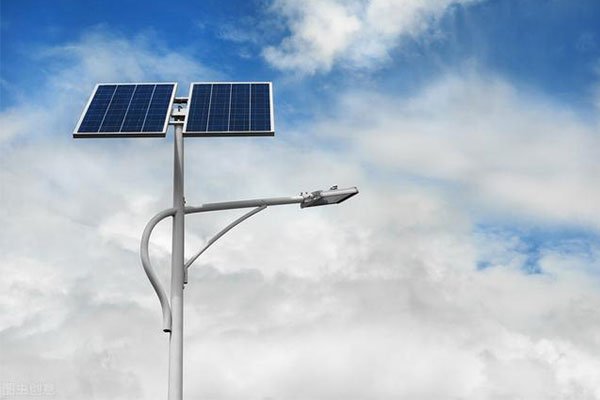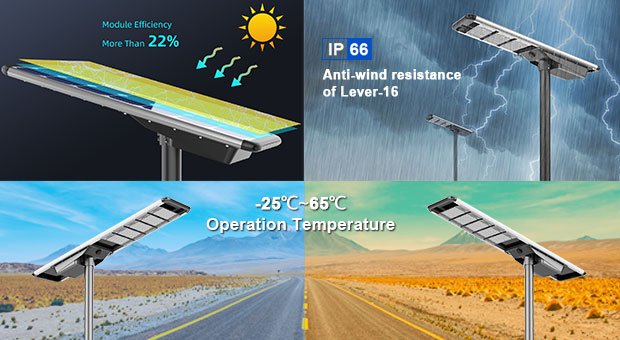Cities worldwide rely on street lighting for safety and functionality, but traditional systems come with high energy costs and maintenance demands. How can solar technology improve urban lighting while reducing expenses?
Smart solar street lighting combines renewable energy with intelligent controls to reduce electricity costs, enhance security, and support sustainability. With advanced battery storage and smart technology, these systems provide efficient and reliable lighting for modern cities.
As more cities invest in smart infrastructure, integrating solar street lighting is a key step toward sustainable and cost-effective urban development.
How Solar Street Lights Work?
Solar street lights operate autonomously, using stored solar energy to illuminate streets without grid dependency. But how do they function efficiently, even in challenging conditions?
Solar street lights consist of solar panels, LED fixtures, rechargeable batteries, and smart controllers. These components work together to provide sustainable, self-sufficient lighting.

Key Components
-
Solar Panels
- Monocrystalline: Higher efficiency and longer lifespan.
- Polycrystalline: Cost-effective but less efficient.
-
Lighting Fixtures
- LED technology: Energy-efficient, long-lasting, and brighter than traditional lamps.
-
Rechargeable Batteries
- Gel Cell vs. Lead Acid: Gel batteries offer longer lifespan and better performance.
- Lithium-Ion: Newer technology with higher efficiency and compact design.
-
Control Systems
- Motion Sensors: Adjust brightness based on movement.
- Automated Lighting: Turns on/off based on daylight levels.
Operational Benefits
- Automatic energy management: Adjusts lighting intensity based on usage.
- Multi-day operation: Stores extra power to function during cloudy days.
- Remote monitoring: Enables real-time system adjustments via IoT integration.
By optimizing these components, solar street lighting becomes a reliable and efficient solution for urban and rural settings.
Advantages of Solar Street Lighting?
Why are more cities switching to solar street lights?
Solar street lighting reduces electricity costs, enhances safety, and decreases environmental impact while providing flexible deployment options.
Cost Savings
- Reduces energy expenses: Cuts municipal electricity bills by 25–60%.
- Lower maintenance: LED and battery technology reduce replacement costs.
Safety & Security
- Consistent lighting: Ensures safer streets in urban and remote areas.
- Reduced electrical hazards: Eliminates risks from underground cabling.
Environmental Benefits
- Lower carbon footprint: Reduces reliance on fossil fuels.
- Sustainable energy: Uses renewable solar power to light public spaces.
Flexibility in Deployment
- Ideal for off-grid areas: Works in locations without access to power lines.
- Scalable solution: Can be expanded based on city needs.
With these benefits, solar street lighting is a sustainable and practical choice for modern infrastructure.
Challenges of Solar Street Lighting?
Despite its advantages, solar street lighting has some obstacles. What are the main challenges?
Higher initial costs, weather-related issues, and maintenance considerations affect solar street lighting efficiency. However, these challenges can be mitigated with proper planning and technology.

Higher Initial Costs
- More expensive than traditional lighting: Requires upfront investment in panels and batteries.
Weather-Related Challenges
- Dust and snow accumulation: Blocks sunlight and reduces charging efficiency.
- Variability in solar irradiance: Cloudy weather affects power generation.
Maintenance Considerations
| Challenge | Solution |
|---|---|
| Battery degradation | Use high-quality lithium-ion batteries |
| Theft and vandalism | Install anti-theft mounting systems |
| Weather impact | Use self-cleaning panels and protective coatings |
By addressing these concerns, cities can maximize the lifespan and efficiency of solar street lighting systems.
Common Causes of Solar Street Light Failure & Solutions
What are the common reasons for system failure, and how can they be prevented?
Improper placement, incorrect system sizing, and lack of maintenance often cause failures. Proper design and regular servicing help prevent these issues.
1. Improper Panel Placement
- Problem: Shaded panels reduce energy absorption.
- Solution: Install panels in open areas with maximum sun exposure.
2. Incorrect Orientation
- Problem: Panels facing the wrong direction affect efficiency.
- Solution: In the Northern Hemisphere, panels should face south for optimal sunlight absorption.
3. Poor System Sizing
- Problem: Undersized batteries and panels lead to power shortages.
- Solution: Properly calculate energy needs before installation.
4. Maintenance Neglect
- Problem: Expired batteries and damaged LEDs cause failures.
- Solution: Implement scheduled battery and lighting replacements.
By following these preventive measures, cities can ensure long-term efficiency.
Policy and Incentive Programs Supporting Solar Street Lighting
How do government policies encourage solar street lighting adoption?
Grants, tax credits, and net metering programs reduce costs and promote large-scale solar deployment.

Government Incentives & Funding
- Jawaharlal Nehru Solar Mission (India) – Large-scale solar street lighting initiative.
- California state incentives – Tax breaks and subsidies for solar infrastructure.
- Soft loans and rebates – Encourage municipalities to adopt solar lighting.
Municipal & Utility Support
- Fast-tracked permitting – Simplifies the approval process for solar projects.
- Net metering programs – Allows excess energy to be sold back to the grid.
By leveraging these incentives, cities can offset costs and accelerate solar adoption.
Smart City Integration & Future Trends in Solar Street Lighting
How does solar street lighting fit into the future of smart cities?
IoT connectivity, AI-driven energy optimization, and grid-connected lighting are shaping the next generation of solar street lights.
IoT & Data-Driven Optimization
- Real-time monitoring – Tracks energy usage and system performance.
- Automated adjustments – AI optimizes brightness based on traffic conditions.
Advanced Energy Storage
- Lithium-ion and solid-state batteries – Improve efficiency and longevity.
- Hybrid grid-solar models – Reduce battery dependency for urban applications.
Multipurpose Smart Poles
- Integrated surveillance cameras – Improve security.
- Public Wi-Fi hotspots – Provide connectivity in urban areas.
The future of solar street lighting lies in fully integrated, self-sustaining smart city networks.
Implementation Strategy for Cities
How can cities successfully adopt solar street lighting?
A step-by-step approach ensures proper implementation and long-term benefits.

Key Steps
- Conduct Feasibility Studies – Assess local solar irradiance and weather conditions.
- Select the Right Technology – Choose efficient panels, LEDs, and batteries.
- Optimize Placement & Design – Ensure panels receive maximum sunlight exposure.
- Secure Funding & Government Support – Utilize available incentives and grants.
- Implement Smart Controls – Motion sensors and remote monitoring enhance efficiency.
Following these steps ensures a successful transition to solar-powered street lighting.
Conclusion: The Future of Solar Street Lighting
The transition to smart solar street lighting is essential for sustainable urban development.
With advanced technology, financial incentives, and smart city integration, solar street lighting offers long-term savings and environmental benefits.
As cities strive for energy efficiency, solar street lighting will play a key role in building smarter, safer, and more sustainable communities.






